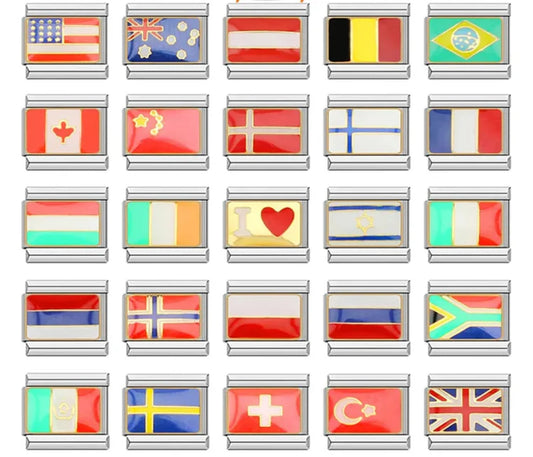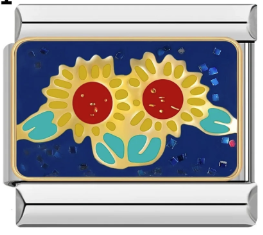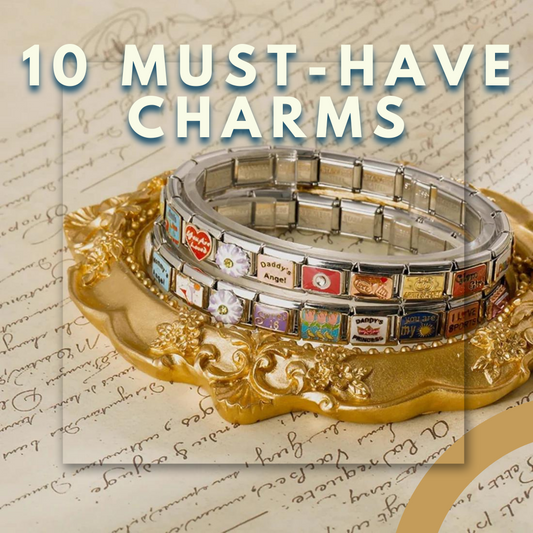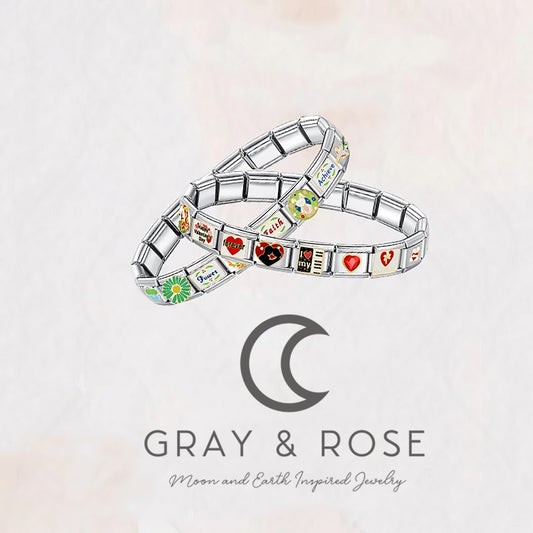The term ‘sterling silver’ refers to a specific type of silver alloy. It contains 92.5% pure silver and 7.5% fine copper, which makes it very soft and malleable. This allows it to be easily used in fine jewelry and decorative household items. Sometimes, other metals make up 7.5% of the composition, but the 925 on silver always indicates 92.5% silver purity.
Is Sterling Silver 925 real?
Sterling silver is a term that most Gray and Rose jewelry enthusiasts are familiar with, and most have surely seen the 925 hallmark stamped on a ring's base or a necklace clasp. The number 925 on jewelry denotes how much silver it contains.
On authentic sterling silver jewelry, the hallmark 925 or a version of the word sterling is stamped in a discreet location, like the inside of a band or the back of a pendant. A jeweler's loupe or magnifying lens may be useful in seeing the sterling silver 925 stamp and other jewelry hallmarks if the item is extremely small.
The hallmark 925 is used to identify real sterling silver jewelry, which contains 92.5% silver.
Sterling silver is an alloy, which is a mix of different metals. Sterling silver (925) comprises one or more additional metals that give the usually delicate substance more strength in contrast to pure silver, which contains 99.9% elemental silver (Ag). Due to its inherent softness, pure silver cannot be used to create jewelry without being mixed with a harder metal.
92.5% silver is frequently used to make functional silver jewelry. Most often, copper makes up the remaining 7.5% of the metal in 925 sterling silver; but some silversmiths choose to harden their creations with alloys of zinc or nickel. Many jewelry collectors prefer sterling silver that has been strengthened with copper, especially those with sensitive skin.
Your sterling silver jewelry's composition, as well as external elements like humidity and skin oils, can affect whether wearing it will cause your fingers to turn green. To understand more about sterling silver and the other metals we use in our jewelry, see our jewelry care guide.
Jewelry made of sterling silver may tarnish as a result of skin oils, moisture, and metal composition.
Other types of Silver – Fakes Silver-colored metals
Because silver is both a color and an element, there may be some misunderstanding regarding the various kinds of silver. Many alloys that contain less than 92.5% silver and a handful that have no silver at all are referred to as "silver" alloys.
The word "sterling" may be applied to items of lesser silver purity in other markets, even though sterling silver 925 is the norm in the US and many other nations. You can determine a piece has less silver than American sterling silver if it is labeled 800 or 900. European silver or currency silver are two names for these less pure metals. For example, 800 represents 80% silver, 900 represents 90%, and so on.
Silver-colored metals without elemental silver are referred to by words like "alpaca" and "nickel silver" (ag).
Several silver-colored metals used in jewelry contain no silver at all, further complicating the situation. Terms like "nickel silver," "German silver," "alpaca," and "paktong" refer to alloys that, to the untrained eye, resemble silver but are actually made of nickel, copper, and zinc. In barrettes, pillboxes, and costume jewelry, alpaca and nickel-based "silver" are frequently used.
They can be appropriate substitutes for 925 sterling silver as long as they are clearly marked and priced accordingly. If you're looking for real sterling silver or have a nickel allergy, working with a reliable jewelry manufacturer and doing your research are essential.
All of our jewelry is made from 92.5% silver and 7.5% copper. Explore our collections of 925 sterling silver jewelry that is nickel-free.




















